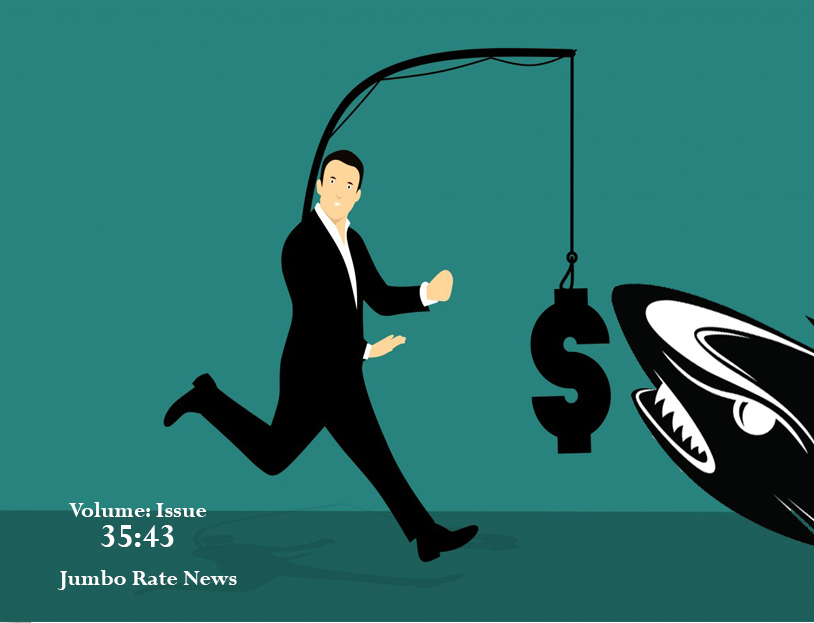Results of the FDIC’s biennial National Survey of Unbanked and Underbanked Households (released October 23rd) revealed good news and bad. The good news is that more American households now have a banking relationship than ever before with only 6.5% of the nation remaining unbanked.
On the flip side, that means there are still 14.1 million Americans (or 8.4 million households) without a savings or checking account. While the FDIC credits improved socioeconomic conditions for the decline in unbanked households, it is the lower-income sector that is more likely to be lacking banking services.
What’s more, 13% or 14.8 million of U.S. households demonstrated a need for short-term credit that remained unmet by “mainstream” credit. Where do they turn? Over 22% said they turned to nonbank firms (such as payday lenders or check cashing companies) to meet their needs within the past year.
Interestingly, 58.7% of unbanked households say they are not likely at all to open a bank account in the next 12 months. The most common reason for this was they don’t believe they have enough money to justify a bank account. Distrust of banks came in a close second. Other, less cited reasons were privacy and high or unpredictable bank fees.
To reach these consumers, a number of banks and credit unions are designing accounts specifically for the low and moderate-income sectors. Some are teaming up with local organizations to make home-ownership more attainable, others are offering low-cost transaction accounts to attract those living paycheck to paycheck.
The Consumer Financial Protection Bureau (CFPB) has even worked on trying to end payday debt traps, and is looking at changing the rules for payday lenders again (although we don’t expect to see those changes anytime soon). For members of federal credit unions, however, there already is a payday alternative loan (PAL) option. Membership, of course, is a requirement, and not all federal credit unions offer them, but of the 484 FCUs that issued PALs in the first half of 2018, here’s what we know:
- Over 95,000 PALs were granted;
- The average loan amount was $665;
- Interest rates never exceeded 28% APR and were generally much lower; and
- Total PALs in the first half of 2018 exceeded $63.5 million.
Since a credit union’s main objective is to serve its members, not make money, PALs were designed to provide an alternative to high-cost payday loans available elsewhere. Now in 2018, the NCUA has proposed two PAL options: PAL I and PAL II. They each have specific criteria prescribed by the National Credit Union Administration (NCUA) to protect both the borrower and the lender, while giving options to fulfill the short-term funding needs of the credit union members.
PAL I loans have the following requirements:
- The loan amount must be between $200 and $1,000
- The term of the loan must be between one month and six months.
- The borrower may not make more than three PALs in any rolling six month period and may not have more than one PAL at any given time.
- A PAL CANNOT be rolled over (unlike other payday lenders where as much as 75% of their income comes from fees associated with rollovers).
- The FCU fully amortizes the loan.
- The borrower must be a member of the federal credit union for at least a month.
- Application fees may be charged to recoup costs, but may not exceed $20.
- The FCU must limit the aggregate dollar amount of these loans and must properly underwrite the loans.
PAL II loans differ in the following ways:
- Loan amounts not to exceed $2,000.
- Term not to exceed 12 months.
- Membership is required but with no time restriction.
- Still only one loan outstanding at a time but the borrower may exceed three PAL II loans in a rolling 6 month period.
The federal credit unions listed on page 7 had the highest dollar volume of PAL loans during the first half of 2018. The data was taken directly from the June 30, 2018 call reports with the exception of the Star-Rating (of course) and the average dollar amount per PAL, which we calculated based on the other data. Call reports from this June reflect an increase of over $1 million in PALs over last June. So while credit does remain elusive for some, members of these credit unions are in a much better position to solve their short-term needs.


